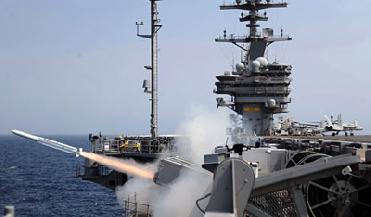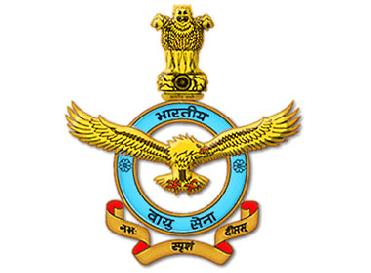
A NATO Sea Sparrow missile is launched from the aircraft carrier USS George H.W. Bush (CVN 77). US Navy photo by Mass Communication Specialist 3rd Class Nicholas Hall/Released.
WASHINGTON (BNS): For the first time two Evolved NATO Sea Sparrow missiles and two Rolling Airframe Missiles (RAM) have been fired successfully from the USS George H.W. Bush (CVN 77) aircraft carrier, under the first Combat Systems Ship's Qualification Trials (CSSQT) of the aircraft carrier.
CSSQT is a combined effort between the Combat Systems, Operations and Weapons departments to test the aircraft carrier's self-defence systems and CVN 77 has to go through series of qualifications and certifications before its maiden deployment in the US Navy.
"It's an end-to-end testing of the Combat Systems Suite, to include tactics, techniques, and procedures," Combat Systems Officer, Cmdr. John B. Vliet, said in a US Navy official news release.
"It's an operational verification of the ship's war-fighting and self-defence capabilities. Combat Systems with Operations department has worked around the clock for the last six months, grooming equipment and training for this exercise,” he added.
The Evolved NATO Sea Sparrow missile is a semi-active missile that requires feed from directors to locate its target, and the RAM is a passive missile, meaning the missile uses built-in sensors to home in on targets.
"The NATO Sea Sparrow Missile system holds eight missiles in each launcher and the RAM uses 21 missiles in each launcher. It's a lot of work for one launch, but when we deploy we will have to load a total of 58 missiles,” said Ramirez, the on board expert for the missile systems.
According to the release, the test involved two watch teams to create two unique scenarios for each missile system. The watch teams acted as the communications link between combat systems and the weapons systems.
"This test makes or breaks the defence mentality of the entire ship. It's the first step in a trust-building foundation, between the systems operators and the rest of the crew,” he added.
The lengthy systems certification process, which involved weapons onload and system approval from Carrier Strike Group 2 and the Board of Inspection and Survey (INSURV), directly involved the aircraft carrier's Weapons department.
"We had to verify and requisition the exact missiles being used in the launch, once missiles were on board we were responsible for turning them over to Combat Systems personnel,” Aviation Ordnance man 1st Class (AW/SW) Chris J. Morrison of Weapons department, said in the release."
US Navy had used telemetry missiles in the launch, as these live missiles have the warheads replaced with data recovery technology and they are helpful for gauging accuracy.
 Previous Article
Previous Article Next Article
Next Article













The Indian Air Force, in its flight trials evaluation report submitted before the Defence Ministry l..
view articleAn insight into the Medium Multi-Role Combat Aircraft competition...
view articleSky enthusiasts can now spot the International Space Station (ISS) commanded by Indian-American astr..
view article